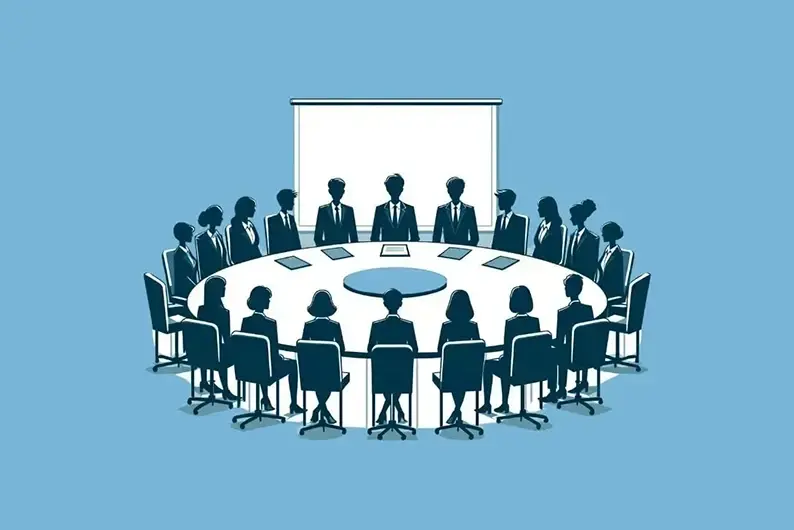Workforce planning holds a vital role in ensuring organizational adaptability. In a talent landscape characterized by uncertainty and rapid changes, coupled with a highly dynamic labor market, businesses must continuously evolve to maintain their competitive edge and effectively address present and future challenges.
Workforce planning formalizes what every business must do -- identifying, acquiring, developing, and retaining talent. However, workforce planning compels organizations or business units to think strategically about how to meet their present and future business needs, taking into account various factors. The primary goal of workforce planning is to ensure that an organization has the right people, with the right skills, in the right positions, at the right time.
The Current State of Workforce Planning
As we head into 2024, organizations are faced with some new and persistent challenges. For many industries, an aging population, low unemployment rates, and skills gaps pose difficulties in finding suitable talent. The enduring shift toward hybrid and remote work has changed the soft skills needed by employees and managers. The impact of AI on ways of working, skills, and roles already has some rethinking hiring and upskilling initiatives. Meanwhile, changes in employee priorities and values require employers to evolve retention strategies.
HR and Talent Acquisition teams find themselves in a challenging position, tasked with attracting and retaining an engaged and agile workforce.
Why Is Workforce Planning Important Today?
With these challenges in mind, strategic workforce planning is a crucial element in ensuring the success of your company. Following the disruption in the workforce since the pandemic and at the early stages of new ways of working, it feels like an opportune time for organizations to look strategically at their workforce needs alongside the business’s strategic goals. Both HR and Talent Acquisition teams must actively engage in assessing their workforce planning, identifying essential long-term skills, and aligning them with the company's goals. Whether through recruitment or upskilling initiatives, these efforts underscore the significance of effective workforce planning.
Below are key reasons workforce planning is so important today:
Skill Gap Identification and Mitigation: Through workforce planning, organizations can identify gaps in skills within their current workforce. This enables proactive measures such as training, upskilling, or hiring to address these gaps, ensuring that the organization has the right talents to meet its objectives.
Adaptation to Changing Business Needs: Workforce planning helps organizations stay agile and responsive to changing business conditions. By anticipating shifts in market demands or industry trends, companies can adjust their workforce strategy to meet evolving requirements, ensuring sustained competitiveness.
Enhanced Employee Satisfaction: Matching employee skills with job requirements, providing training opportunities, career pathing, and maintaining optimal staffing levels contribute to higher job satisfaction and engagement among employees, ultimately improving overall productivity and retention.
Resource Alignment: Workforce planning allows organizations to identify the right number of employees with the necessary skills. This ensures that the workforce is aligned with business goals, preventing overstaffing or understaffing.
What To Consider When Workforce Planning
Forecasting: Accurately predicting future workforce needs based on an organization's strategic goals, growth projections, industry trends, and market demand can focus your workforce planning more effectively. Labor market insights by geography, demographics, and industry will support your forecasting efforts.
Skills Gap Analysis: Identifying the skills and competencies required to achieve organizational objectives and comparing them to the current workforce's capabilities is another key aspect of ensuring goals are met is an effective method for staying ahead of challenges.
Training and Development: Implementing training and development programs to upskill and reskill employees can help meet changing job requirements and industry trends.
Recruitment and Talent Acquisition: Employers must develop creative strategies for attracting, hiring, and retaining top talent to fill skill gaps and meet future workforce demands.
Utilization of Contractor and Gig Workers: Collaborating with staffing agencies and contractors offers specialized expertise and resources when needed.
How to Start Workforce Planning
There are numerous approaches to workforce planning. The first step is to clearly define the objectives and scope. Forming a cross-functional project team with representatives from HR, finance, operations, and key business units is essential. Identifying and involving leadership and department heads ensures a holistic approach. From there, you will need workforce analytics as well as market insights to help identify gaps and forecast needs.
As we step into 2024, it’s time to view workforce planning not as a challenge or hurdle but as an opportunity to shape a resilient and adaptive workforce, addressing skill gaps, fostering employee satisfaction, and embracing innovative strategies for a successful journey in the evolving world of work.
Resources for Workforce Planning and Talent Attraction
At LevelUP, we understand the complexities and challenges of HR and Talent Acquisition teams. Our HR Advisory and Consulting services provide clients with the talent insights to support effective workforce planning and sustainable support to complete it.





